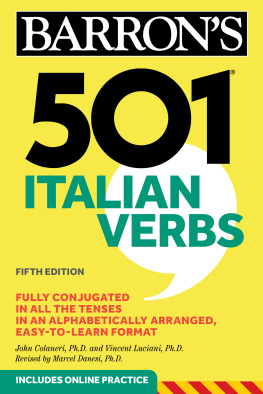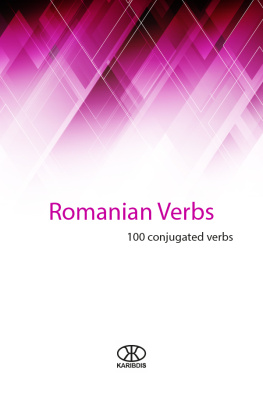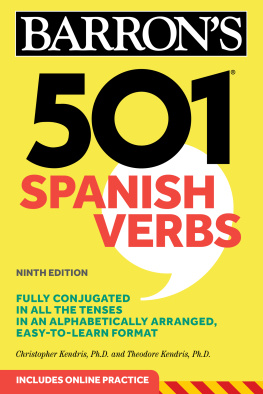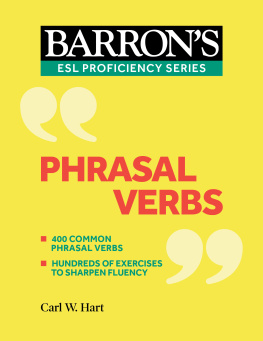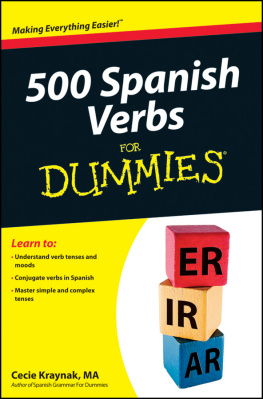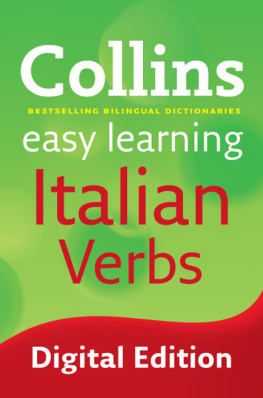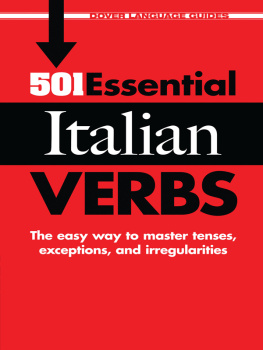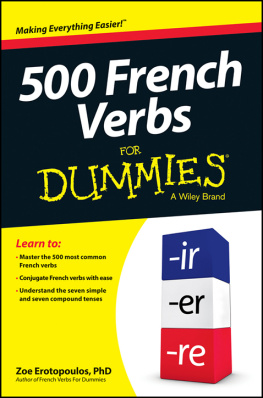

Copyright 2020, 2015, 2007, 2001 by Kaplan, Inc., d/b/a Barrons Educational Series
All rights reserved under International and Pan-American Copyright Conventions. By payment of the required fees, you have been granted the non-exclusive, non-transferable right to access and read the text of this eBook on screen. No part of this text may be reproduced, transmitted, downloaded, decompiled, reverse engineered, or stored in or introduced into any information storage and retrieval system, in any form or by any means, whether electronic or mechanical, now known or hereinafter invented, without the express written permission of the publisher.
No part of this publication may be reproduced or distributed in any form or by any means without the written permission of the copyright owner.
Published by Kaplan, Inc., d/b/a Barrons Educational Series, Inc.
750 Third Avenue
New York, NY. 10017
www.barronseduc.com
ISBN: 978-1-5062-6067-9
10 9 8 7 6 5 4 3 2 1
Contents
Alphabetical Listing of 501 Italian Verbs
Fully Conjugated in All Tenses
This handy reference guide for students, business people, travelers, and anyone else interested in the Italian language presents the fully conjugated forms of over 500 commonly used Italian verbs.
The verbs are arranged alphabetically, one to a page, so that you will find the complete conjugation for a verb on a single page. The subject pronouns have been omitted, as they usually are in Italian, unless they are needed for some communicative or grammatical reason. Only the reflexive pronouns are given, since these are always required. The feminine endings of verbs conjugated with essere are indicated in parentheses in the Compound Tenses section. The forms next to the second-person singular of the imperative indicate the negative, the only form that is different from the affirmative.
This text also includes an index with 1,500 additional verbs conjugated like the model verbs. There is also a Concise General Grammar Review providing an overview of the essentials of Italian grammar. Finally, students will find ample opportunities to practice at onlinebarronsbooks.coma site with online grading and explanations.
Vowels
| a | Similar to the a sound in father | casa / house |
| e | Similar to the e sound in bet | bene / well |
| i | Similar to the i sound in machine | indirizzi / addresses |
| o | Similar to the o sound in boat | otto / eight |
| u | Similar to the oo sound in boot | uva / grapes |
The letter i can also stand for semivowel sounds similar to those represented by the y in yes and say. The letter u can also stand for semivowel sounds similar to those represented by the w in way and how.
| ieri / yesterday | mai / ever, never |
| uomo / man | laurea / degree (university) |
Consonants
| b | Identical to the b sound in boy. | bello / beautiful |
| c | Similar to the English k sound in kit. | cane / dog (in front of a, o, u) |
| c | Similar to the English ch sound in chin. | cena / dinner (in front of e, i) |
| ch | Similar to the ch in chemical. | che / what |
| ci | Represents the same ch sound. | ciao / hi, bye |
| d | Like the d sound in day. | dopo / after |
| f | Identical to the f sound in fun. | forte / strong |
| g | Similar to the English g sound in good. | gatto / cat (in front of a, o, u) |
| g | Similar to the English j sound in just. | gente / people (in front of e, i) |
| gh | Similar to the gh in ghetto. | ghiaccio / ice |
| gi | Represents the same j sound. | giorno / day |
| gli | Like the English lli sound in million. | luglio / July |
| gn | Like the English ny sound in canyon. | gnocchi / gnocchi dumplings |
| l | Identical to the l sound in love. | alto / tall |
| m | Identical to the m sound in more. | matita / pencil |
| n | Identical to the n sound in nose. | naso / nose |
| p | Identical to the p sound in price. | porta / door |
| q | Identical to the q sound in quick. | quinto / fifth |
| r | Similar to the rolled r sound. | rosso / red |
| s | Similar to the English s sound in sun. | sapone / soap |
| sc | Similar to the sk in sky. | scuola / school (in front of a, o, u) |
| sch | Similar to the sch in school. | scherzo / joke (in front of e, i) |
| sci | Represents the sh sound in shop. | scienza / science |
| t | Pronounced like the t sound in tap | tardi / late |
| v | Identical to the v sound in vine. | vino / wine |
Double Consonants
Any single consonant can have a corresponding double articulation. The pronunciation of double consonants lasts twice as long as that of the corresponding single consonant and is slightly reinforced:
| fato / fate | fatto / fact |
| pala / shovel | palla / ball |
| caro / dear | carro / cart |
Accent Marks
Some words show an accent mark on the final vowel. This is, of course, where the stress occurs:
citt / city
giovent / youth
perch (or perch ) / why, because
bench (or bench ) / although
virt / virtue
s / oneself
As a rule, Italian words bear no accent except on the final vowel. In this text only the final accents are shown, since they have a direct bearing on the meaning, for example, provo , I try; prov , he tried.
An Italian verb is conjugated with avere to form the compound tenses when it is transitive (that is, when it can have a direct object).
Reflexive verbs, such as alzarsi , are conjugated with essere .
Impersonal verbs are conjugated with essere . Verbs denoting atmospheric conditions may be conjugated with avere or essere ; for example, nevicato , ha nevicato .
Some verbsfor instance, correre , saltare , and volare are conjugated with avere when referring to the action (e.g., Ho corso velocemente . I ran swiftly.) and with essere when referring to the goal of the action (e.g., Sono corso a casa . I ran home.).
Transitive verbs normally take avere when an object is expressed or implied and essere when used passively with no object (when the object functions grammatically as the subject).
Next page
